Redefining the Emirates Group
New Mission
- Providing comfortable and safe transportations;
- Establishing customer satisfaction as the top priority;
- Introducing the principles of cooperation and information sharing between the company’s affiliates.
New Vision
- Expansion into the global economy and worldwide market;
- Acquisition and mergers as the company’s key policy;
- Increasing the number of customers and the quality of services
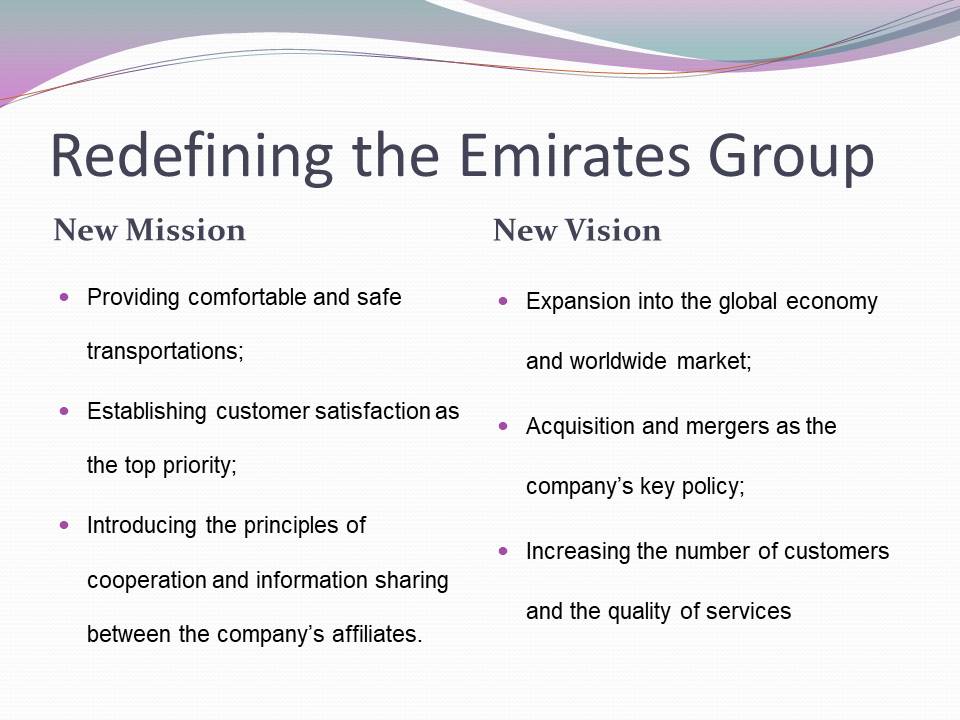
Goals and Objectives
The key goal for the Emirates Group for 2014 is increasing the number of customers by 50% by 2015. the subsequent goal is raising customers’ awareness concerning the Emirates Group benefits.
- Improving the audit system in order to attain better quality of services;
- Expanding into the global market;
- Increasing the quality of services provided during the flight;
- Changing the leadership style to a mix of a transformational and a laissez-faire one (Chaundry & Javed 2012, p. 259);
- Bringing the number of costs down in order to spend more on promotion campaign.
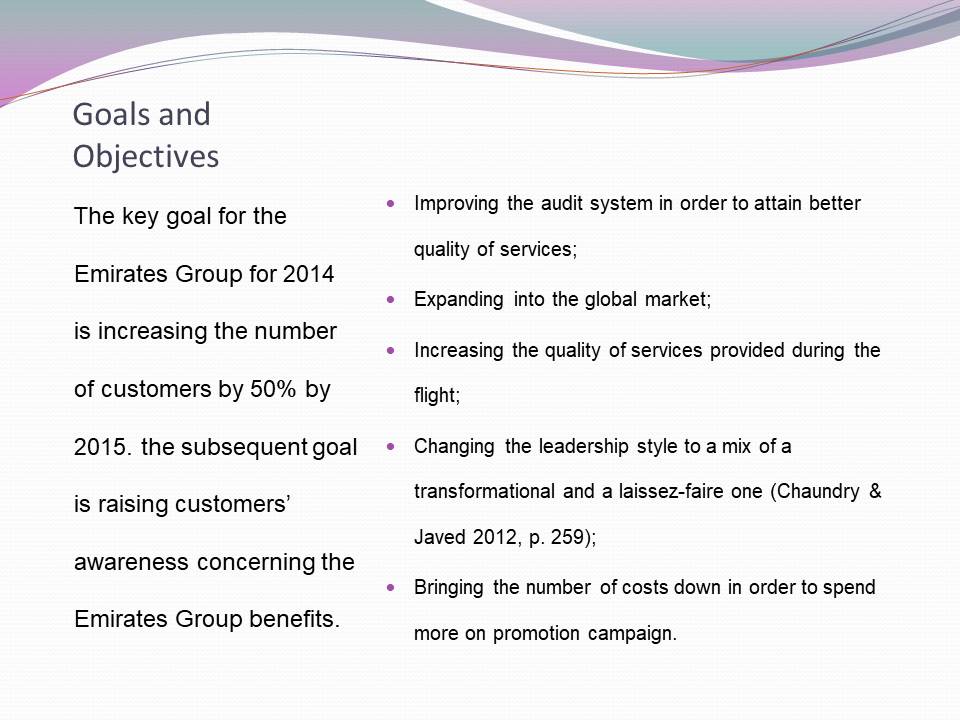
Means to Achieve Goals and Objectives
- reconsidering the leadership strategy;
- creating a promotion campaign.
Current issue: corporate governance model.
Solution: transformational (motivation) and laissez-faire (independence) LS. leadership styles.
- Costs can be reduced by cutting the amount spent on inbound and outbound logistics;
- Expansion will be successful once becoming partners with several influential U.S. and European airlines;
- Mergers can be carried out by acquiring minor UAE companies providing flight related services.
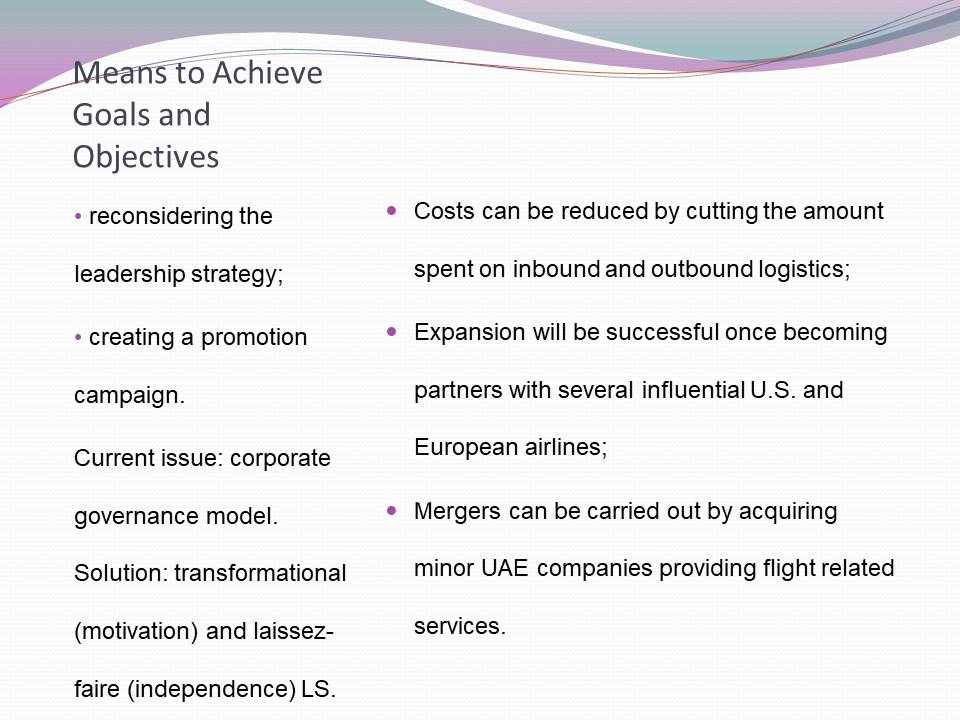
Emirates Group Chances Evaluation
SWOT
- Strengths: technological assets, quality services, skilled staff.
- Weaknesses: high prices.
- Opportunities: global expansion.
- Threats: failure due to tough competition (Iran Air, Iran Aseman Airlines).
PEST
- Political: global expansion.
- Economic: providing pricing options.
- Social: addressing business people and families (middle and upper class).
- Technological: efficient use of advanced technology for updating customers and providing quality services.
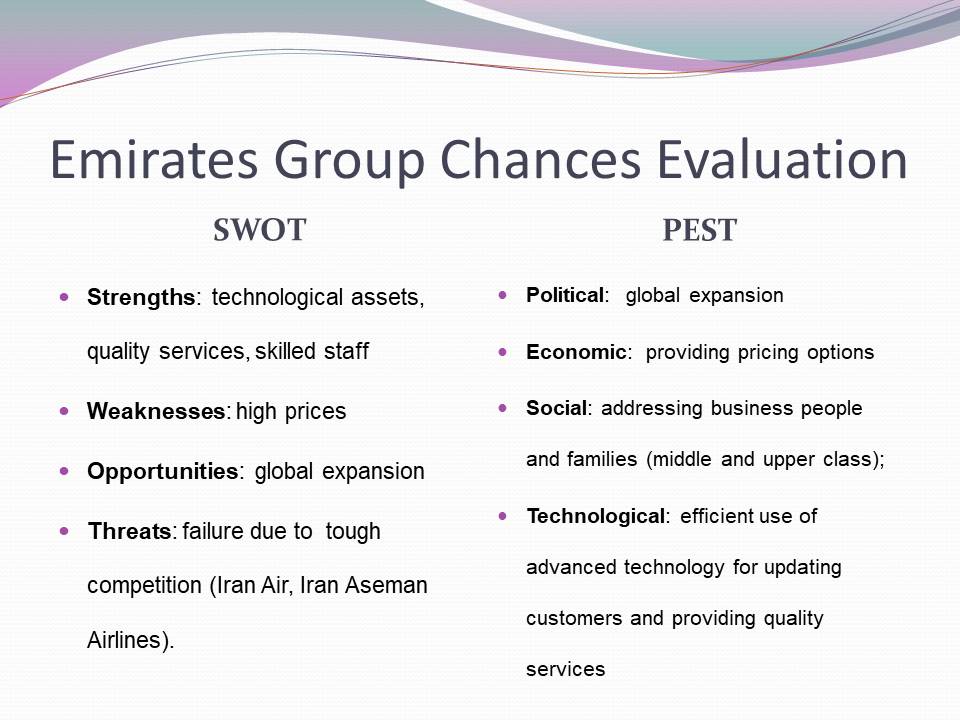
Efficient Leadership as the key tool
Transformational
- Reinventing employees’ perception of work;
- Enhancing employees’ motivation;
- Managing conflicts efficiently;
- Being flexible towards he changes within the target market.
Laissez-faire
- Allowing the leaders of the affiliates to make local decisions;
- Using audits as the key tool for checking services quality;
- Making the leaders of the affiliates send monthly reports on the company’s performance.
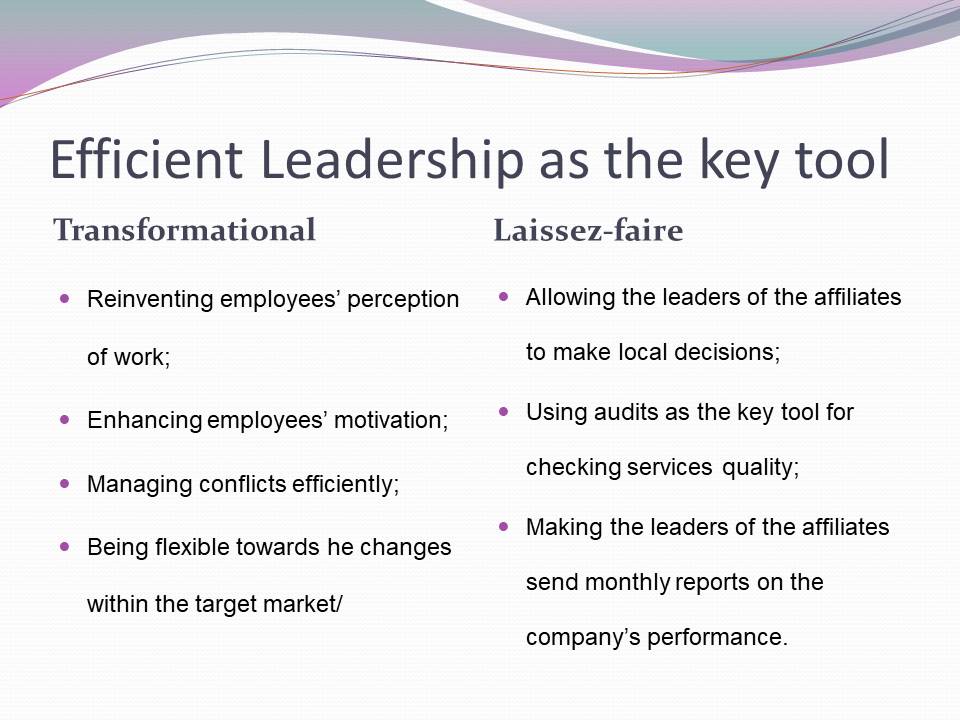
Business Portfolio Design
- Mentioning the company’s progress over the course of its existence (particularly 2000 – 2014).
- Mentioning the number of aircrafts handled in 2014 (264,950, a 4.5% increase (Financial annual report 2013, p. 66).
- Mentioning productivity (132, men hours per aircraft (Complete annual report 2013, p. 60)).
Note: after the introduction of laissez-faire principles, the company’s affiliates leaders will have the right to come up with their portfolio choices.
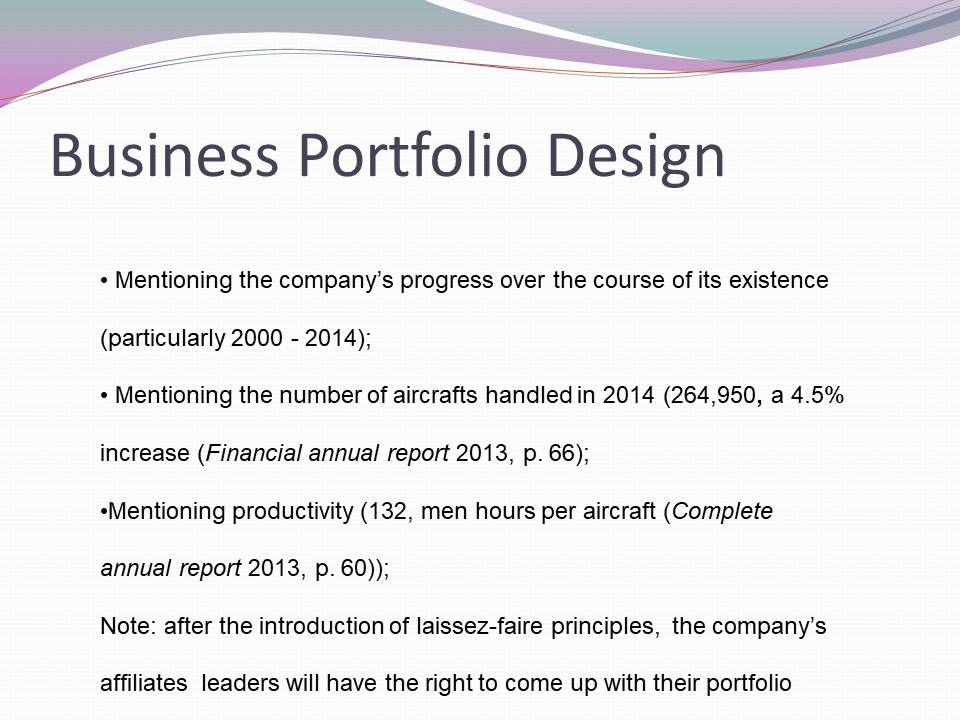
Marketing Issues in Emirates Group
Issue
- Lack of awareness about Emirates Group’s advantages among the target customers;
- High competition rates within the target market;
- High costs may avert customers despite increase in service quality
Solution
- Creating a promotion campaign that will help raise awareness and advertise the company’s services;
- Better information management must be used to forestall the rivals;
- During promotion, the emphasis must be on the increase in quality.
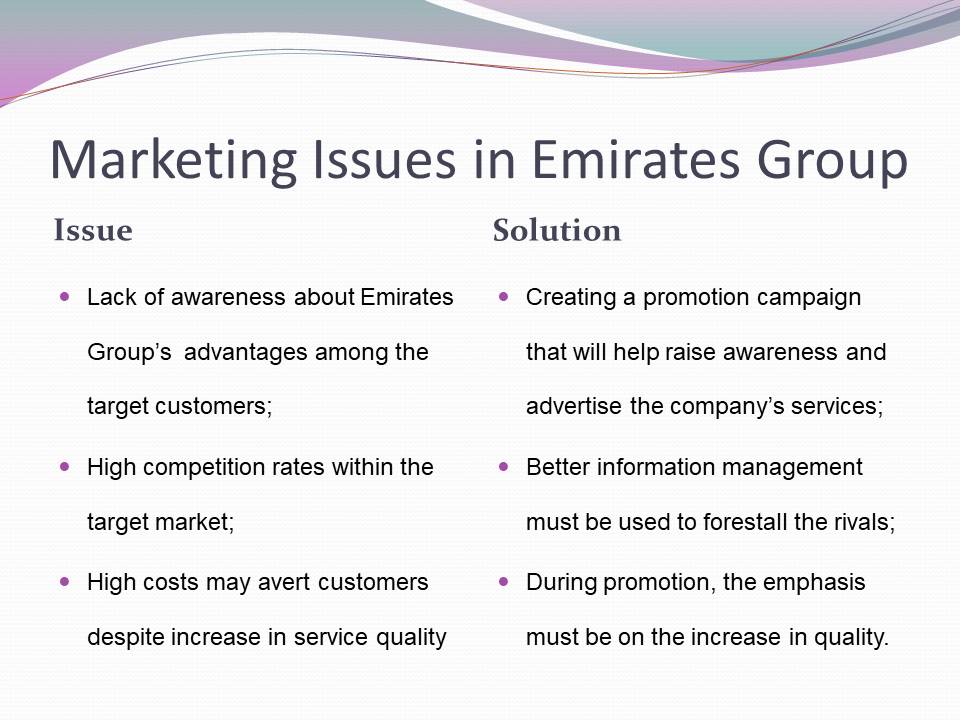
Promotion Campaign Design
Target audience:
- Potential customers;
- Investors and sponsors;
- Companies for mergers and acquisitions;
- Business partners (suppliers, limited partners, general partners, etc.).
Putting emphasis on quality (technology, customer support, comfort and high speed).
Stressing that high price defines outstanding quality.
Mentioning flexibility of the pricing policy (B-class transportation, discounts, etc.).
Listing key services (passenger/cargo transportation).
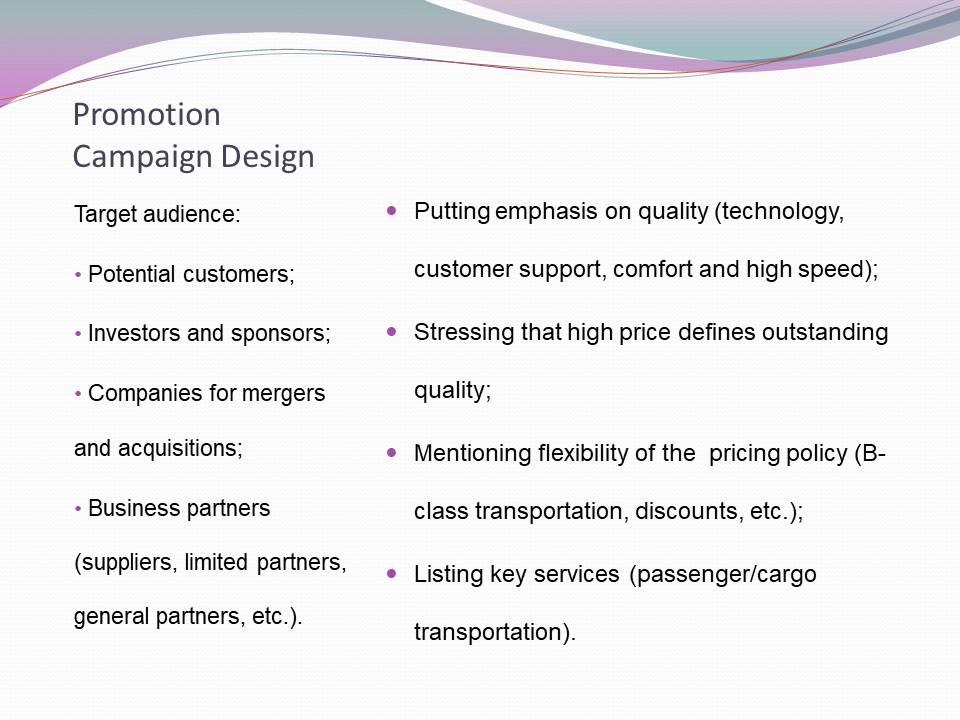
Marketing Strategy and Competition
Key rivals for Emirates Group:
- Air India, Ltd.;
- Iran Air;
- Iran Aseman Airlines.
Key strengths of the rivals:
- 8,000,000 passengers/year (Iran Air (Iran Air 2014, para. 1));
- quality staff training (Iran Aseman Airlines 2014, para. 1).
Key weaknesses of the rivals:
- Weak leadership;
- Local influence.
Marketing strategy:
- Putting emphasis on safety, comfort (e.g., cushions, smoke alarm, etc.) and fast travel;
- Listing additional options for customers (free meals, e-booking, etc.);
- Mentioning flexible pricing policy and pricing options , including discounts;
- Stressing the company’s intentions concerning expansion.
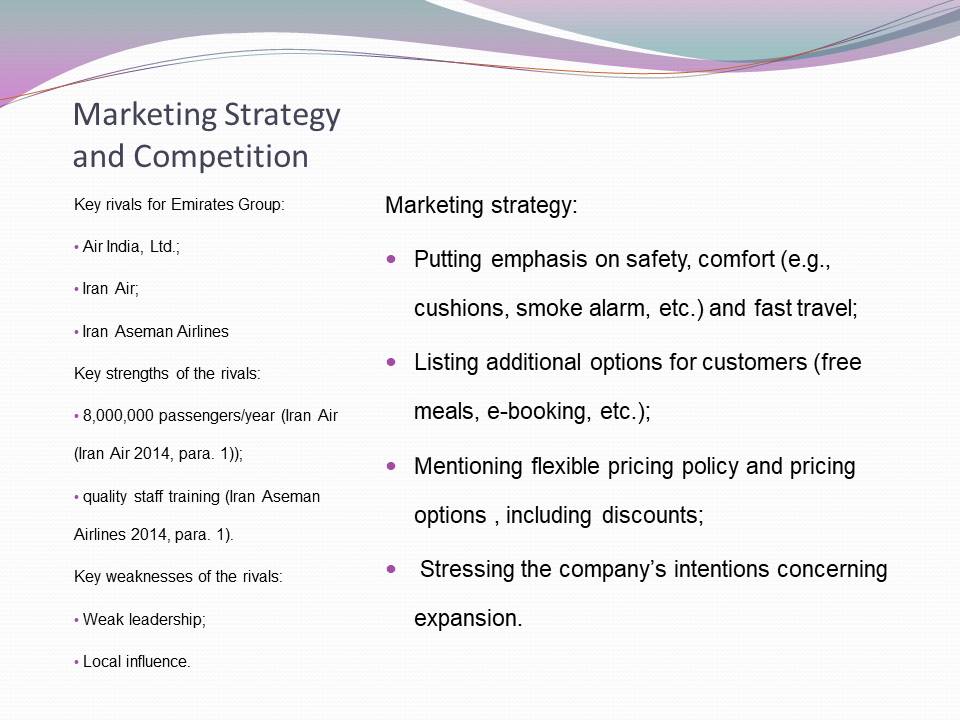
Putting Technological Advances to Use
- Creating the opportunity for customers to check in via the cell phone;
- Providing Internet-based applications for helping the customers keep the track of the company’s information (flights, tickets available, pricing, etc.);
- Using the aforementioned applications to keep the clients updated on the company’s news;
- Giving customers the option to unsubscribe.

Reference List
Chaundry, A Q & Javed, H 2012, ‘Impact of transactional and laissez faire leadership style on motivation,’ International Journal of Business and Social Science, vol. 3, no. 7, pp. 258-264.
Complete annual report 2013. Web.
Financial annual report 2013. Web.
Iran Air 2014, Iran Air, 40 years of history, 55 years of experience. Web.
Iran Aseman Airlines 2014, Safety. Web.